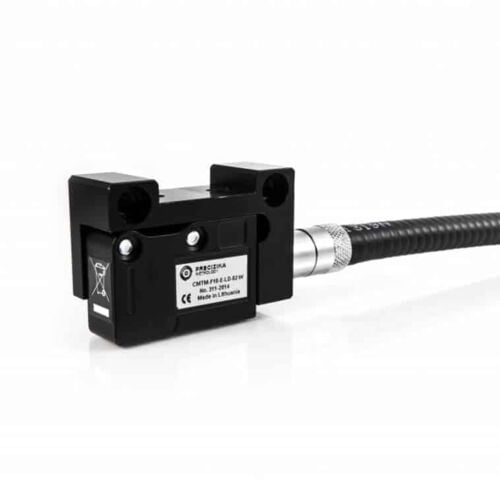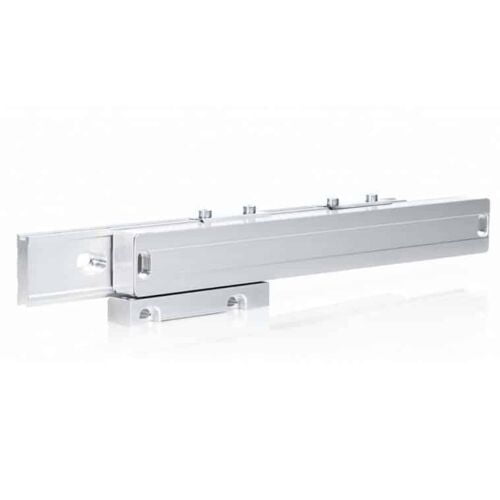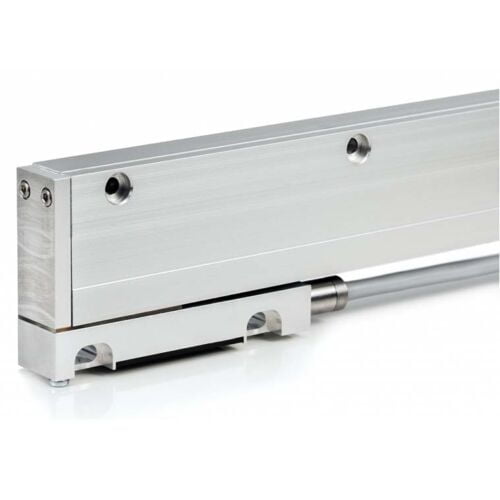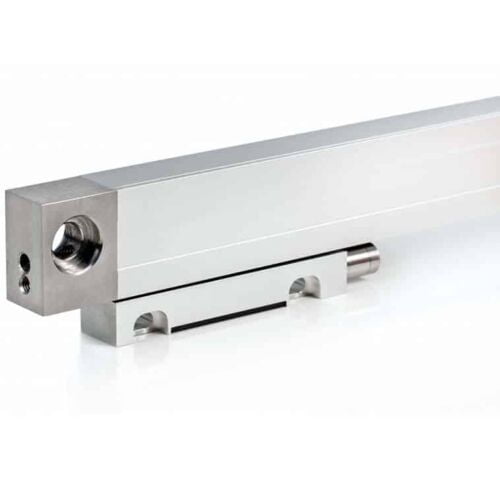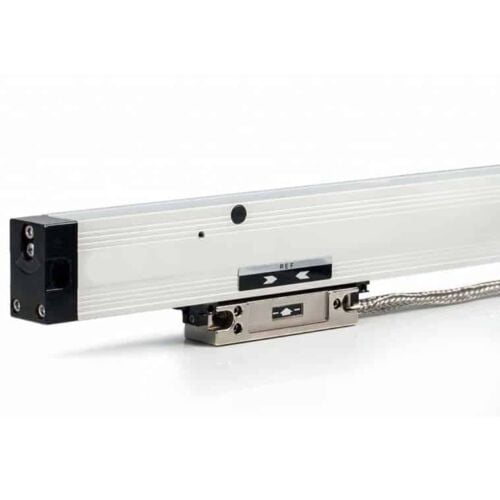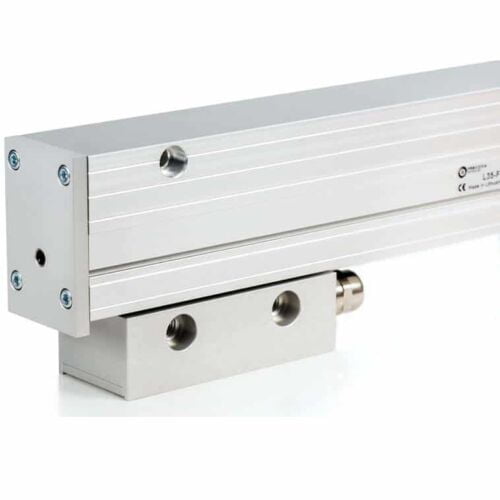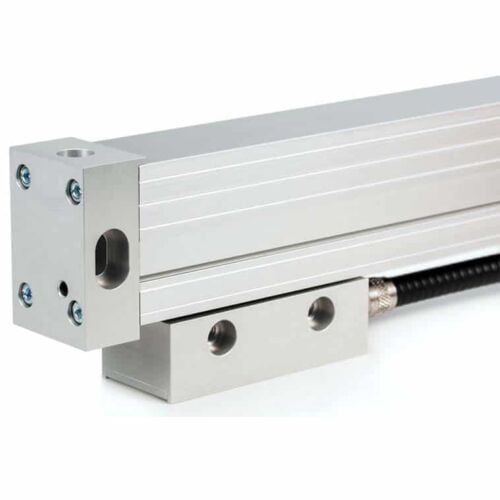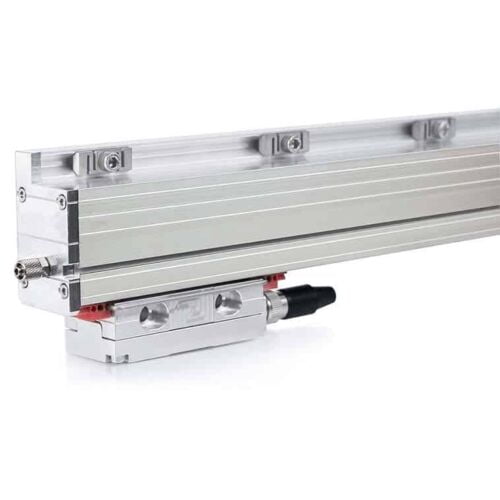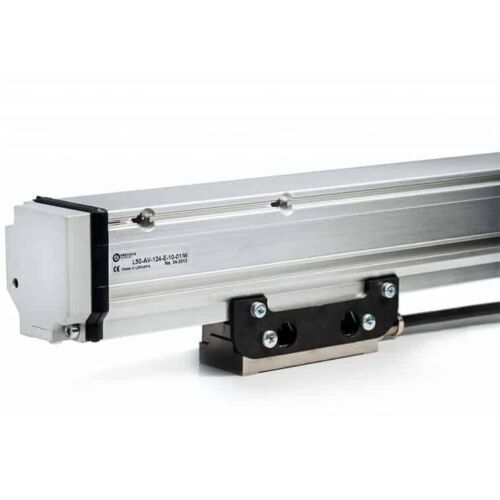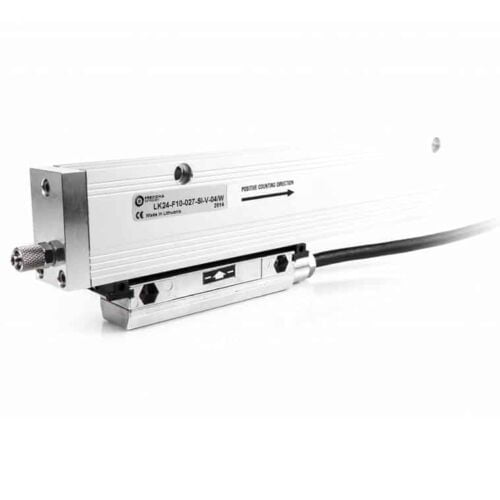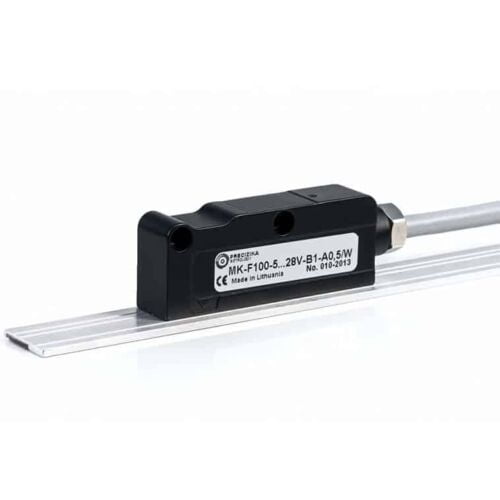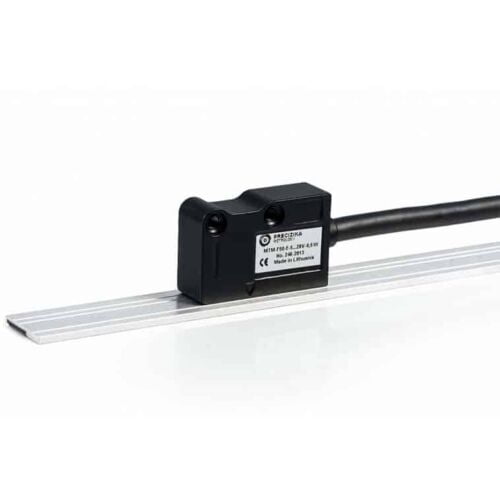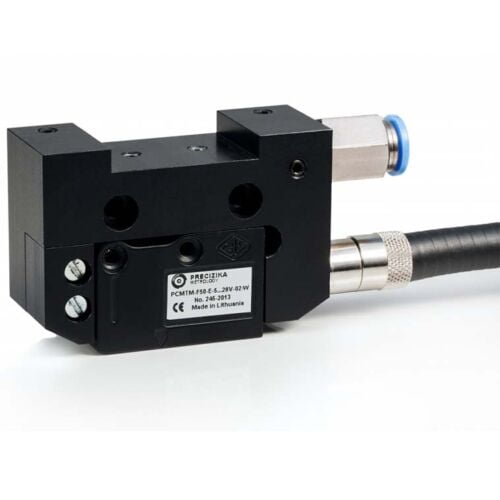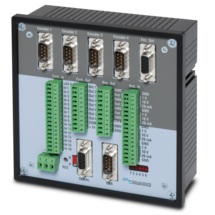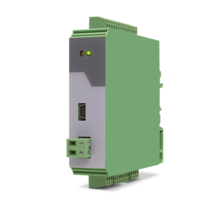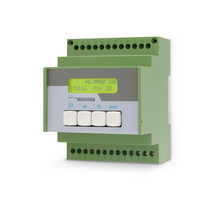Features
- Type: Non-contact magnetic linear encoder (measures displacement without physical contact)
- Measuring length: Up to 50 meters
- Function: Converts linear movements of machine components into electrical signals with information about:
- Value: Distance travelled
- Direction: Forward or backward movement
- Durability: Designed for harsh industrial environments and resistant to various contaminants and physical impacts.
- Components:
- Metal-based magnetic band (MP): Stores the encoded information
- Reading head: Detects the magnetic field variations on the band and converts them into electrical signals
- Profile rail (PS) with protective band: Provides mounting and protects the reading head

